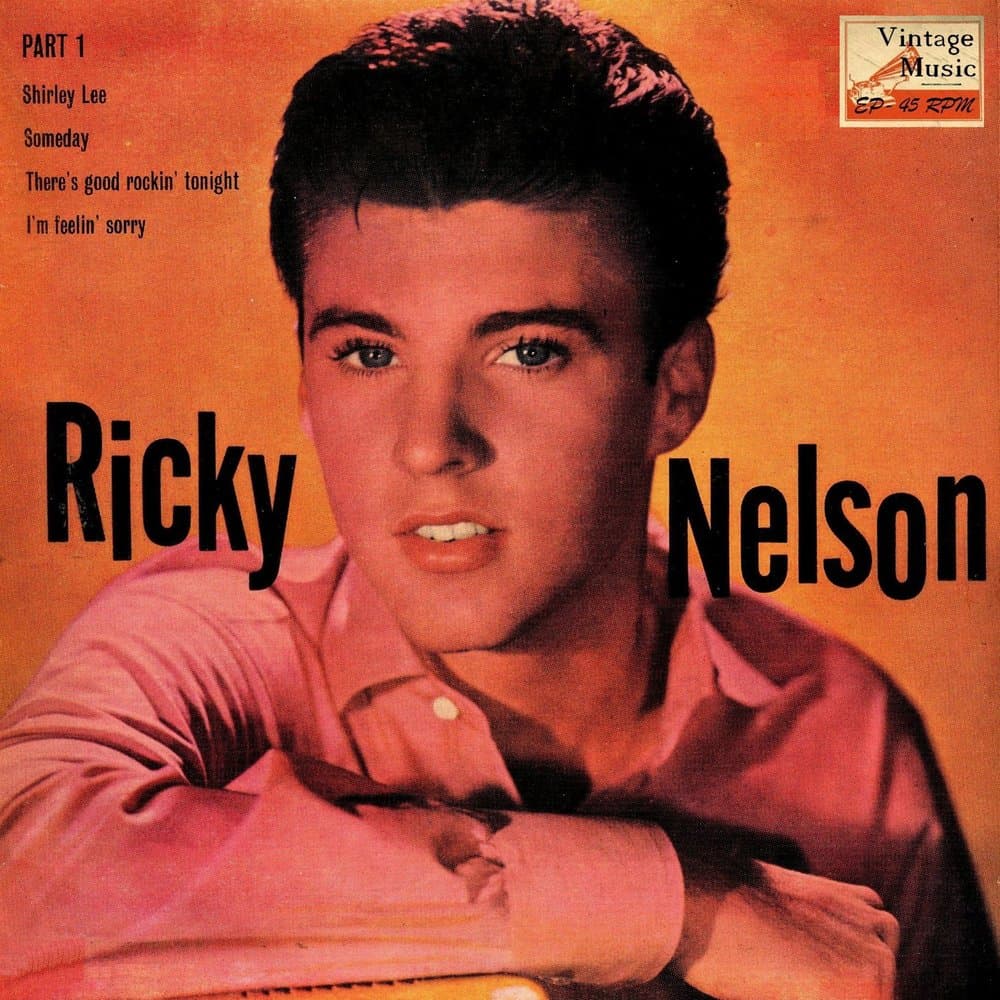
Ricky Nelson’s “Travelin’ Man”: A Journey Through Time and Hits
“Travelin’ Man” is one of Ricky Nelson’s most iconic songs, a track that not only showcased his smooth, velvety voice but also solidified his status as a major star in the early 1960s. Released in 1961, this song became a defining moment in Nelson’s career, reaching the coveted number one spot on the Billboard Hot 100. Written by the prolific songwriter Jerry Fuller, “Travelin’ Man” captures the spirit of the era, blending catchy melodies with a sense of youthful adventure.
The song’s lyrics tell the story of a young man who travels around the world, falling in love with women in different cities. With references to exotic locations like Mexico, Alaska, and Hawaii, the song paints a picture of a carefree, romantic globetrotter who has a girl in every port. Despite the playful nature of the lyrics, there’s an underlying theme of longing and the fleeting nature of these romantic encounters. Nelson’s delivery adds a touch of wistfulness to the narrative, making the song both fun and emotionally resonant.
Musically, “Travelin’ Man” is a perfect example of early 1960s pop-rock, with its upbeat tempo, jangly guitars, and light percussion. The production is clean and polished, emphasizing Nelson’s vocal performance while allowing the instrumentation to provide a lively backdrop. The song’s structure is straightforward, with verses and choruses that are easy to sing along to, contributing to its lasting popularity.
One of the unique aspects of “Travelin’ Man” is the use of a “call and response” technique between Nelson and the backing vocals. This adds a dynamic quality to the song, giving it a sense of movement that mirrors the travel theme. The background vocals echo Nelson’s lines, creating a harmonious blend that enhances the overall listening experience. This interplay between lead and backing vocals became a hallmark of many hits from this era, and “Travelin’ Man” is a prime example of how effective this approach can be.
Upon its release, “Travelin’ Man” quickly climbed the charts, becoming one of the biggest hits of 1961. Its success was bolstered by Nelson’s established fan base, cultivated through his role on the popular television show The Adventures of Ozzie and Harriet. The song’s appeal, however, went beyond just his TV fame; its infectious melody and relatable lyrics resonated with a wide audience, from teenagers to adults. “Travelin’ Man” stayed at the top of the Billboard Hot 100 for two weeks, further cementing Nelson’s place in the pantheon of early rock and roll stars.
In addition to its commercial success, “Travelin’ Man” holds a special place in music history for its innovative use of music videos, even before the concept became mainstream. The song was paired with a montage of travel footage and images of Nelson performing, aired during an episode of The Adventures of Ozzie and Harriet. This early example of a music video helped to popularize the song and gave fans a visual connection to Nelson’s journey across the globe.
Over the years, “Travelin’ Man” has remained a beloved classic, covered by various artists and featured in films and television shows that celebrate the golden era of rock and roll. Its enduring appeal lies in its timeless theme of adventure and romance, as well as Nelson’s charismatic performance. The song also serves as a reminder of a time when pop music was beginning to expand its horizons, incorporating elements of rock, folk, and even world music into its sound.
In conclusion, Ricky Nelson’s “Travelin’ Man” is more than just a hit single; it’s a cultural touchstone that captures the spirit of an era. With its catchy melody, relatable lyrics, and innovative presentation, the song stands as a testament to Nelson’s talent and his ability to connect with audiences across generations. Whether you’re a fan of classic rock and roll or just discovering Nelson’s music, “Travelin’ Man” offers a delightful journey through time, reminding us of the joy and excitement that comes with exploring the world, even if only in song.